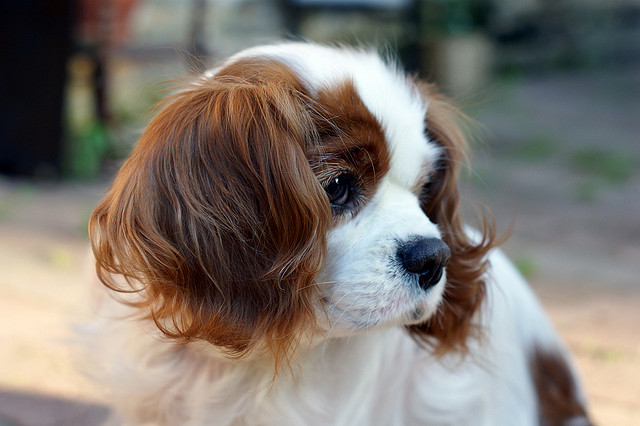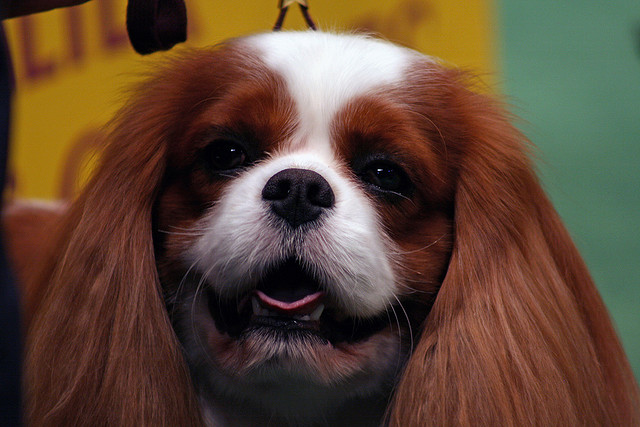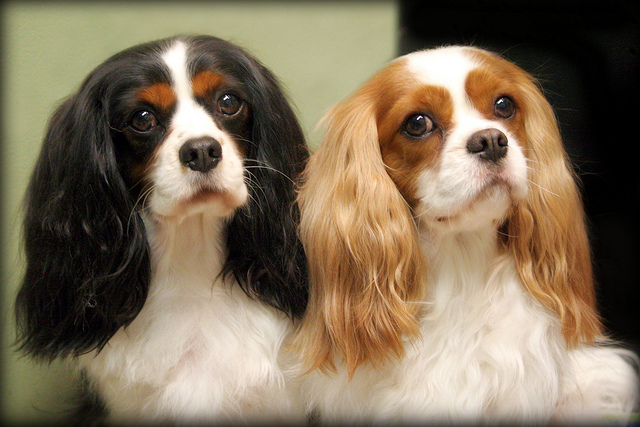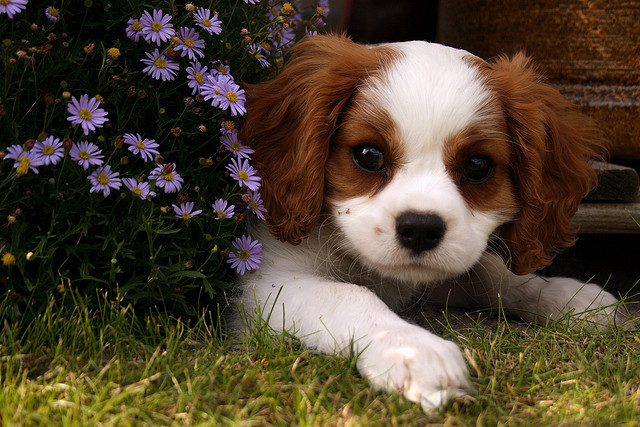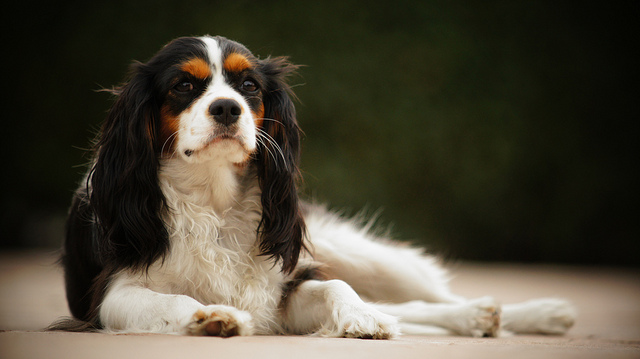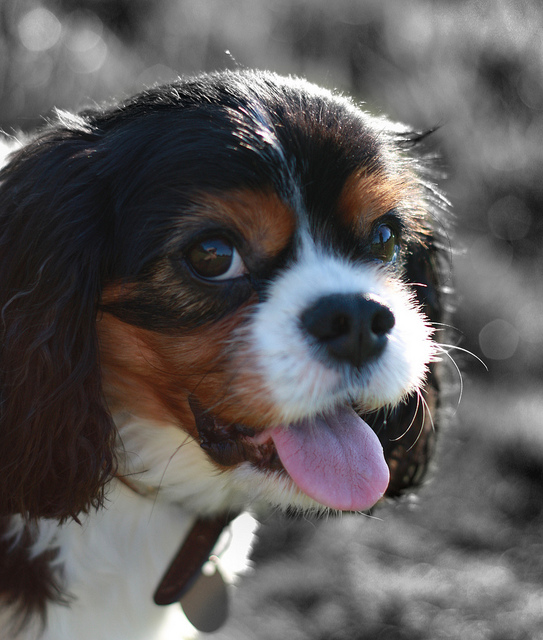The Cavalier King Charles Spaniel is often referred to as the Cavie, the Cavalier or the Cav. Spaniels have existed for centuries and royalty has often favored these types of dogs. These dogs are considered a toy breed and have a free, fearless character, yet they are affectionate and gentle, which has endeared them to the hearts of many owners. These friendly dogs are great with children, and they even love being around other people than their owners, which is uncommon for many other breeds. For individuals or families looking for a loving dog that is small, Cavalier King Charles Spaniels are a perfect choice.
Origin
The actual name of this breed came about because British king, King Charles 1, who ruled in the 1600s, loved these dogs. At that time, only very wealthy individuals could afford to own a dog that couldn’t earn his keep. The breed was also well loved by King Charles II, and the breed continued to gain in popularity within Britain for many years, until the reign of William and Mary.
An American, Rosewell Eldrige, visited England in the 1920s, and he was disappointed to find that the breed that he’d admired for so long no longer resembled the beautiful spaniels he’d seen in old royal paintings. He decided to have a contest, offering a prize of money for the best dog and bitch that had the old world look of the old toy spaniels kept by royals in the past. The contest lasted for five years, and finally a winner was found in 1927 – a beautiful dog who was named Ann’s Son. Using this dog as a model, a breed standard for this dog was created in 1928. At this point, other breeders started working to bring back the old spaniel look from the past, and these dogs would become the Cavalier King Charles Spaniel breed that we love today.
In 1928, the Cavalier King Charles Spaniel Club was started in England. Later the Cavalier King Charles Spaniel was finally recognized by England’s Kennel Club as a separate breed in 1944. Still today, the Cavalier continues to be a very popular breed.
While some people believe that only the English Toy Spaniels were used to create this breed, it’s suggested that Papillons, Cocker breeds and maybe Welsh Springers were used to bring back the breed traits that were desired.
It wasn’t until much later, in 1052, that the first Cavalier King Charles Spaniels arrived in America. Then, a breed club was started in 1056. It wasn’t until 1993 that this breed was finally recognized by the AKC and added to the Miscellaneous Class of dogs. Finally in 1993 the American Cavalier King Charles Spaniel Club was started. Today this breed is considered part of the AKC’s toy group.
Appearance
The Cavalier King Charles Spaniel is a small dog that has a gentle expression and beautiful, small eyes. The cushioning that is located under the breed’s eyes make the face look soft and gentle. Their ears are long and feathered and they also have feathering on the feet, chest and legs. Sometimes the tail is docked, but most people who choose these dogs as family pets don’t choose to have the tail docked.
This breed has a medium length, silky, wavy coat that shouldn’t be curly. While Blenheim is the most common color, they may come in black and tan, solid ruby and tricolor. These dogs usually stand at 12-13 inches high and when they are adults, they generally weigh between 13-18 pounds.
Temperament
Although the Cavalier King Charles Spaniel looks quite dainty, they are actually quite energetic and they really love being outdoors. Of course, they also enjoy being pampered and they love cuddling with their owners. This breed prefers to be with people, so they make an excellent companion dog. However, they shouldn’t be left on their own for long periods of time, since they may deal with anxiety.
Even though they are small, they still enjoy being outdoors and they need some daily exercise. They need a couple walks each day and should be allowed to play and run outdoors several times each week. While they do well in small places, like an apartment, they still need plenty of daily activity. A sedentary life may make anxiety even more of a problem among this breed.
This breed is extremely easy to train, since they love to please and they will do anything they can to get a treat. It is important to be very gentle when training these dogs, since they don’t do well with harsh treatment. After basic training, the Cavalier King Charles Spaniel also performs well with agility and advanced obedience training.
Grooming
The luxurious coat of the Cavalier King Charles Spaniel may appear high maintenance, but this breed actually requires little grooming. To eliminate any loose hair, it is important to brush their coat a couple times each week. This helps avoid tangles and ensures that the coat stays shiny. While they only need to be bathed as needed, Cavaliers that spend a lot of time outdoors will require more bathing. This breed doesn’t need to be trimmed, but some owners trim the hair around the feet for a neater look.
Working roles
Through the years, the Cavalier King Charles Spaniel has largely been a companion dog, and these dogs make a loveable, wonderful pet. However, they do enjoy going out with game hunters, since they enjoy chasing and tracking game.
Health
Most Cavalier King Charles Spaniels will live to be 10-14 years old. Unfortunately, this breed often suffers from a number of different health problems. The most common health problem for this breed is mitral valve disease, and it nearly always shows up in this breed at some point. Mitral valve disease is the most common cause of death among this breed as well. Other genetic health problems that affect the breed include syringomyelia, luxating patellas, hearing disorders and hip dysplasia. Since the breed descends from about six dogs, the risk of inherited diseases is high.
Other common health problems often seen in Cavalier King Charles Spaniels include:
- Retinal dysplasia
- Brachycephalic upper airway syndrome
- Endocardiosis
- Entropion
- Patent ductus arteriosus
- Chiari-like malformation

